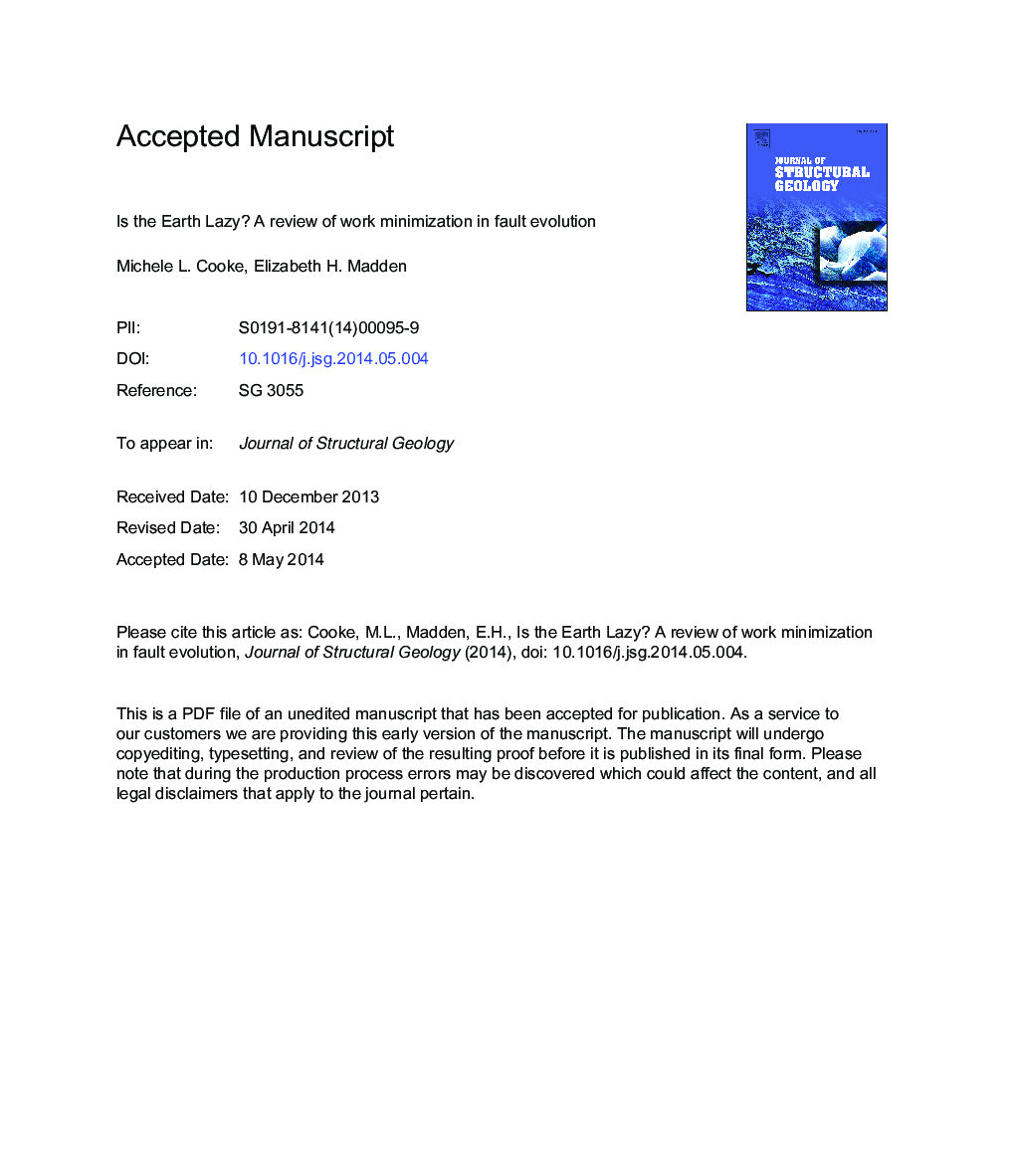| Article ID | Journal | Published Year | Pages | File Type |
|---|---|---|---|---|
| 6444899 | Journal of Structural Geology | 2014 | 48 Pages |
Abstract
The principle of work minimization has been used in various forms to account for the development of active fault systems within a wide range of tectonic settings. We review the successes, challenges and implications learned from previous applications of work minimization. Examination of the energy budget provides insight into the competing influences of different processes within fault systems at a variety of scales. We present each work budget component with considerations for numerical implementation. Additionally, we demonstrate numerical implementation by solving for the energy budgets and finding the most efficient propagation paths of a joint and several faults. Consideration of the energy budget captures growth patterns that are consistent with both laboratory observations and theoretical predictions using the energy release rate, G. Unlike using G, work minimization is not limited to collinear growth. In comparison with predictions using Coulomb failure planes, work minimization eliminates uncertainty in predicting fault propagation by (1) evaluating the trade-off between tensile and shear failure ahead of the fault and (2) avoiding the ambiguity introduced by the two potential Coulomb failure planes. Application of work minimization to faulting demonstrates the effectiveness of this approach in predicting both the orientation and timing of fault propagation.
Related Topics
Physical Sciences and Engineering
Earth and Planetary Sciences
Geology
Authors
Michele L. Cooke, Elizabeth H. Madden,
